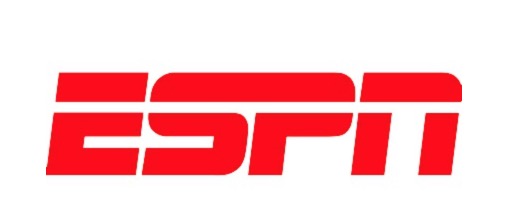Ad Disclosure
Disney Got Hammered Because ESPN Continues To Decline
By Kyle Scott
Published:

Awful Announcing, on Disney’s stock tumbling 5% after earnings:
Disney’s cable networks division (which includes the ESPN networks) saw its second-quarter revenues fall 1.86 percent to $3.96 billion, a drop of over $73 million. That’s still above Disney’s other divisions (parks, studio, consumer and interactive), but that illustrates just how important the cable networks are to the whole company and how a downturn there has the potential for a wider impact.
The cable networks’ downturn is far from the whole miss on the targets (another part is the decision to pull the plug on Disney Infinity and get out of publishing videogames, which will involve 300 layoffs and a $147 million charge for the quarter), but it’s a significant part. Those network problems aren’t all about ESPN (another big one is that the transition from H2 to VICELAND has been expensive), but the Worldwide Leader is a substantial part of them, especially as ESPN ad revenue declined by 13 per cent in the quarter. There is some good news on the networks front, as operating income for the division rose 12.34 per cent thanks to lower costs and higher distributor fees, but that doesn’t seem to be enough to stave off those concerned about where ESPN’s going.
I was literally just watching Jim Cramer talk about this on CNBC, and it’s clear there’s a huge gap in perception of mainstream media between Baby Boomers and Millennials (not surprisingly). Cramer, as I’m guessing many 50+ people do, sees ESPN as invaluable to sports fans. That’s partly true – for everyone – given the fact that ESPN-ABC owns the broadcast rights to so many major events. But Cramer cited SportsCenter, draft coverage and fantasy football as reasons why he needs ESPN. But there’s a whole generation of folks for whom that’s simply not the case. Many of you defer to blogs – like this one, SB Nation, Deadspin, Barstool, Awful Announcing, The Big Lead – over traditional mainstream coverage for your everyday sports fix. Live event coverage is often more entertaining and informative on Twitter or Snapchat than it is on ESPN or any TV network (this is true for politics and breaking news as well). And other than for last-minute updates or background noise, few serious fantasy sports players, especially daily fantasy players, use ESPN or other mainstream outlets as their go-to resource. I pay for a Fantasy Labs subscription, which is exponentially more valuable for daily fantasy than anything ESPN could ever produce. And there are, of course, a whole host of other (FREE) resources for that sort of thing. So the notion that ESPN and its non-live sports productions are essential is simply not true for most people. Hence, the Disney stock drop, or at least part of the reason or it.
On the other hand – and as we’ve discussed on podcasts before – cord-cutting is widely feared by the big guys, but there’s still a lack of a reasonable alternative for most people. Disney, like Comcast, is behind much of the content you consume, and just because they’re losing subscriber fees in the short-term does not necessarily mean they’re doomed in the long-term. Just from a sports perspective, ESPN still has the rights to Monday Night Football, the NBA Finals and much more, and NBC still owns the rights to Sunday Night Football, the Olympics, the Stanley Cup Finals, and much more. No one has quite figured out how to efficiently monetize those holdings with cord-cutters, but eventually someone will.
Everyone views cord-cutting as a way to save money, but that’s simply not the case if you want to keep anywhere near the amount of content you currently have. Here’s what a typical sports fan cord-cutter might subscribe to (rounding off prices):
- Broadband (~$50)
- Netflix (~$10)
- Hulu (~$10)
- HBO Now (~$15)
- MLB.tv (~$10– $130 yr)
- NBA League Pass (~$10– $120 yr)
That’s about $100 per month, and it doesn’t include the problem of local sports fans having to workaround cumbersome blackout rules. You typically need a VPN (another $10 per month). Suddenly, you’re spending as much or more as you were a traditional cable bill and still getting less content. The problem is compounded by the fact that you have 6-8 different subscriptions, being billed at different times of the month, all with different login requirements and passwords across a host of devices. There is a need for – get this – someone to bundle together all of those services into one bill, allowing you to get economies of scale. And what does that look like? The cable bundle that you hate.
Someone, soon, whether it’s Apple, Amazon or Comcast, will figure out a way to roll all this stuff into one or two streaming subscriptions, and all this fear about networks, like ESPN, losing subscriber fees will go away, because they will be able to just bundle their stuff in as part of a larger package that includes HBO, Netflix, news channels and regional sports.
There’s certainly a correction coming for networks like ESPN, and the larger media companies, but it’s far from disastrous. Someone just has to figure out how to create the perfect streaming bundle.
Kyle Scott is the founder and editor of CrossingBroad.com. He has written for CBS Philly and Philly Voice, and been a panelist or contributor on NBC Sports Philly, FOX 29 and SNY TV, as well as a recurring guest on 97.5 The Fanatic, 94 WIP, 106.7 The Fan and other stations. He has more than 10 years experience running digital media properties and in online advertising and marketing.